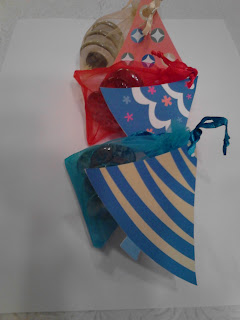Hand print Towel
So, I decided to put a new spin on mine (that also didn't require sewing - as I don't have a machine yet) and make personalized gifts for all of my kids' grandparents and great-grandparents this past year for Christmas, and, of course, one for our own kitchen as well.
Here's what you'll need:
1. Dish towel(s)
2. Heat n' Bond Iron-on Adhesive
3. Iron-on transfer ink-jet paper
4. Fabric
5. One sheet of card stock paper
Step 1: Hand Prints
Trace your child's (children's) hand on the piece of card stock paper and cut out. Use this as a template to trace on to the heat n' bond adhesive. That way, you don't have to keep tracing your child (children's) hands over and over directly on to the iron-on adhesive if you want to make more than one towel at a time. Once you trace them all out on the heat n' bond adhesive, iron on your hand print(s) on to the back side of your fabric. After it cools, cut out the hand print and peel the back of the paper off.
Step 2: Words for your Towel


Play with fonts on your computer and print out several practice pages to see if it's going to be too big or too small for the area of the towel that you want displayed. I had in mind that I wanted my towels to be folded in thirds, so I only wanted the words to be in the middle third of the towel.
Also, I printed much smaller words for the back inside of my towel.
Then, print your final copies on the Iron-on transfer ink-jet paper. By the way, it took me a while to discover that all I needed to do to get my own printer to print backwards (since it's an iron-on) was to select "Iron On Transfer" on my printer settings. Some printers want you to flip the image - so just make sure you check on that before wasting a piece of iron-on paper.
Step 3: Iron your masterpiece together!
Check the iron settings on the instructions for the heat n' bond and the iron-on ink-jet paper - they will be different and you don't want to mess it up after all that hard work you just did.
Also, make sure you are ironing on a flat hard surface (not an ironing board) - I used a few flat towels laid out on top of my kitchen table, however I went off the towel and burned the table cloth a bit - don't let this happen to you!
Step 4: Admire your masterpiece(s)!
Step 5: Prepare as a gift - and include optional glass bead magnets in an organza bag - use same instructions, but use your child's picture printed on photo paper like I did!

P.S. We have washed ours in the washing machine and dried in the dryer with no problems so far.


























